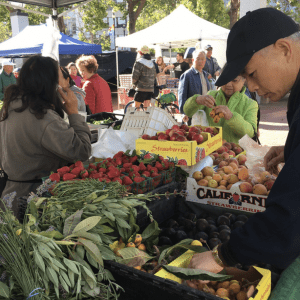Encouraging Sustainable Tourism Amidst the COVID-19 Pandemic
Already more than two years into the COVID-19 pandemic, the topic of traveling, going on vacation, or simply just seeing someplace new seems to be present on almost everyone’s mind. This, of course, makes sense; many of us have spent large amounts of time quarantining, working from home, and only traveling when necessary, so the idea of vacationing is something we are really starting to crave. With this so heavy on peoples’ minds, now is a crucial time to take a deeper look into what vacationing means environmentally, locally, and culturally, as well as observe the issues that come with mass tourism.
In 2017, people made over one billion international trips a year, which is double those made twenty years ago (Corradi). This enormous increase is linked to cheaper air travel as well as increased availability of hotels, short-term vacation rentals like Airbnb, and accommodation services on a worldwide scale. Tourism, once reserved solely for those wealthy enough to afford these travel luxuries, has evolved, now being more accessible and affordable for more people from different backgrounds. Although tourism operates as a significant driver in local and global economies that brings large revenues to tourist destinations, the levels of mass tourism have become largely unsustainable. Mass tourism is responsible for environmental problems, general decline in living standards of indigenous and local peoples, as well as cultural commodification (Corradi). As more and more regions and countries develop their tourism industries, there are clear problems that lie ahead: significant impacts on natural resources, consumption patterns, and social systems.
While you can’t deny that tourism has its benefits to both the economy and towards urban development, again this is done at the expense of natural habitats, local culture, and living conditions. The influx of tourists along with large scale development projects causes pollution and places natural habitats at risk, not to mention the fact that airlines do not pay taxes on fuel and avoid carbon footprint-related charges, which ultimately reduce flight prices and incentivize ecologically harmful tourism (Corradi). Mass tourism also results in a decline of living standards for local residents, as high demand for basic necessities such as food, water, and housing causes an increase in prices (Corradi). This is reflected in Venice, Italy, where locals can no longer afford to live there due to cost increases. Furthermore, as Moroccan writer Marie-Françoise Lanfant explains, “when tourism increases, culture declines” (Tourism in Morocco and Commodification of Culture). All too often, local and historical culture becomes overshadowed and often commodified by a tourist-centered, romanticized outlook of an area, where vacationers see only what aligns with their vacation aesthetic. Unfortunately, tourism-culture is impeding on traditional, local, and spiritual culture of places. Tourism, especially during the COVID-19 pandemic, poses another negative impact: as a threat to public health. While tourism rates are nowhere near as high as they were before the pandemic, there are still a significant number of travelers to vacation destinations.
Being born and raised on Oahu, Hawaii, tourism has always been apparent and played an enormous role in my local economy. Surges of tourism during the COVID pandemic have not only affected the environment, but have impacted public health. While outdoor public spaces including beaches and hikes were forced to be shut down, public schools were not allowed to meet in person, and residents were in lockdown for months, tourists were prioritized due to their importance to the economy. But at what point do we realize that perhaps the locals, environment, and culture are more important than the economic benefits highlighted to justify mass tourism? To me, it is clear that this system of tourism is not healthy nor durable, and I believe we must push for more sustainable tourism, where the health and well-being of the environment, residents, and local culture is maintained and prioritized. When using the word ‘sustainable’ when referring to tourism, one must understand that tourism will never become completely and one hundred percent sustainable as every industry has impacts; however, it can still work actively towards these goals.
The concept of sustainable tourism is essentially encouraging sustainable practices in and by the tourism industry. Sustainable tourism is accountable and able to acknowledge all impacts, both negative and positive, of tourism, aiming to minimize negative impacts and maximize positive ones (What is Sustainable Tourism). Negative impacts include but are not limited to economic leakage, natural environment damage, overcrowding, and overconsumption, while positive impacts include but are not limited to job creation, active preservation of cultural heritage and interpretation, wildlife preservation, and landscape restoration (What is Sustainable Tourism). In response to the norm of mass tourism, sustainable tourism may take approaches including increasing permanence taxes, regulating the number of people that can enter the country, and using transportation systems to lessen the scale. Furthermore, a sustainable tourism industry would encourage tourists to be more conscious of their impact as well as more appreciative of the culture and nature they are witnessing, rather than simply thinking of their trip as an adventure or vacation experience. Many examples of sustainable tourism around the world have been both possible and successful, as seen in Australia, the United Kingdom, the Dominican Republic, and Egypt.
Australian parks have understood and reflected the idea that well-managed tourism can generate not only financial gain, but political support to sustain protected areas of cultural significance as well. Not to mention, fostering sustainable tourism practices in these parks has been shown to increase understanding of environmental values, increase indigenous tourism, and enrich visitor experiences through providing amore genuine experience rather than an artificial one (Destinations). A more comprehensive and award-winning sustainable tourism plan is seen in the South West United Kingdom, which includes marketing and training assistance for businesses, visitor education programs about their impacts and ways to make more sustainable choices, and a “green tourism toolkit” (Destinations). These programs, which prioritize cultural heritage, environmental value, as well as individual experiences are seen all over the world and are met with great success.
In the Dominican Republic, a different approach has been taken with a greater focus on wildlife and educational opportunities. What is described as “turtle tourism” in the Dominican Republic is essentially what started with a man who made a living by saving turtles and educating tourists about them (Island Solutions). This is an example of how companies and countries can engage tourists with more sustainable activities and opportunities in an entertaining and educational way. Finally, in Egypt, the Siwa Environmental Quality Initiative (EQI) offers lodging, ecotourism activities, organic local produce and products, and more, all which were developed based on discussions between community members, stakeholders, and companies (Siwa Sustainable Development Programme). EQI was able to develop a system of sustainable tourism that promotes economic development in harmony with the environment and cultural heritage.
Ultimately, tourism is a huge global industry that seems only to be growing, especially with COVID-19 and the desire to travel on many people’s minds. The current environmental impacts of the mass tourism industry are clear, however it is certainly possible to transform these practices into something more sustainable for communities, culture, and environmental health to reap positive benefits. With sustainable tourism, economies will still be able to flourish, while an area’s environment and culture is protected, along with the wellbeing of local residents.
References
Corradi, Anna, et al. “The Unsustainability of Mass Tourism.” Brown Political Review, 4 Nov. 2017, https://brownpoliticalreview.org/2017/11/unsustainability-mass-tourism/.
“Destinations.” Sustainable Tourism, https://sustainabletourism.net/destinationcasestudies/.
“Island Solutions: Sustainable Tourism for Secure …” Youtube, https://www.youtube.com/watch?v=8OXqdHSOIxI.
“Siwa Sustainable Development Programme” Archnet, https://www.archnet.org/sites/4626.
“Tourism in Morocco and Commodification of Culture.” Morocco World News, https://www.moroccoworldnews.com/2012/02/25887/tourism-in-morocco-and-commodification-of-culture-2.
“Traveling Responsibly.” Sustainable Tourism, https://sustainabletourism.net/.
“What Is Sustainable Tourism?” GSTC, 28 Sept. 2021. https://www.gstcouncil.org/what-is-sustainable-tourism/.


